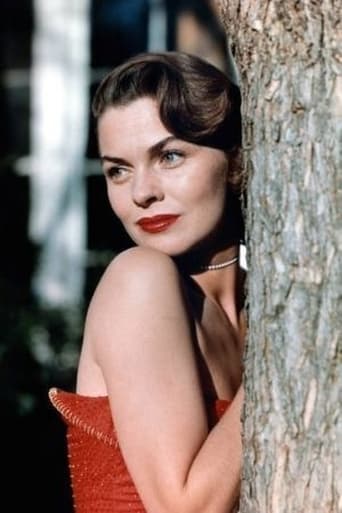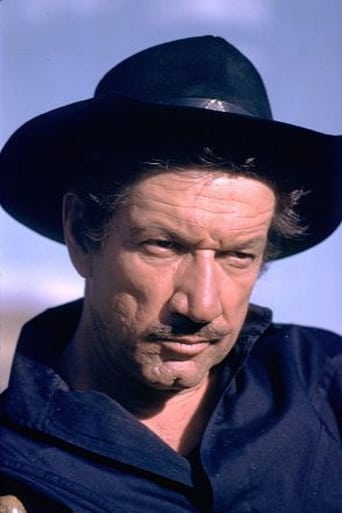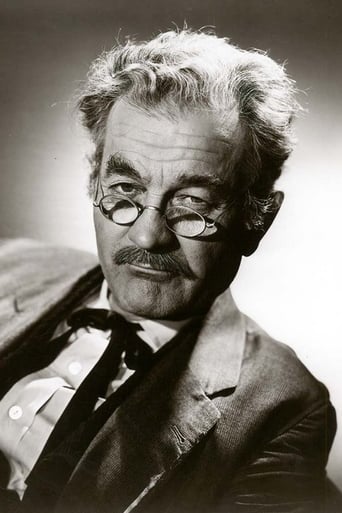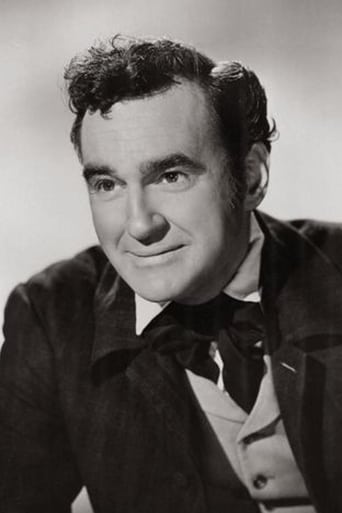weezeralfalfa
A Civil War Western, the western features mostly confined to an Indian attack on a mid-west army post, and a cavalry unit chasing them off. Actually, it's more a game of hide and seek, with a disassembled Gatling Gun being the object of Union forces seeking after it was stolen by Confederate agents in Ohio. The film was shot in color around Durango, CO and several places around Moab, UT, with the erosion remnants in Castle Valley especially memorable, looking rather like Monument Valley, to the south. Available at YouTube.Van Johnson, surprisingly, plays the chief Confederate agent Jim Farraday, His chief nemesis through most of the film is Pinkerton agent Frank Kelso(Jeff Morrow), until Van changes sides, when Britt Manning(Richard Boone), his former aid, becomes his chief European opponent, along with Chief Yellow Hawk, leader of a multi-tribal confederation in an attack on Fort Smith.Some humor is provided by Van plus Melburne Stone, as Bengi: the traveling snake oil salesman, when they sing an odd ditty called "Tapioca" and sometimes a related song, which signals their contact in that town to give them instructions for their further wanderings toward Confederate territory. Also, Joanne Dru(as Nora) along with Van provide some chuckles when she accidentally gets drunk on Benji's whiskey-fortified Chamomile tea, passes out, and is put to bed by Benji and Van, after removing her dress(not shown). Later, Van and Joanne share a small blanket out on the trail, Van requesting that they stay on their side of 'the Mason-Dixon line' in the middle.At Baxter Springs KS, a chorus girl sings "Tapioca" at the request of their agent in that town, Britt Manning(Richard Boone). She brings them to Manning, who gets involved with their problems. The cases of Gatling Gun parts are moved from Benji's wagon to Joanne's hospital wagon, she being a Yankee nurse who was rescued by Van from being stuck in river sand. The wagon searchers decide to let her through without inspection. Benji's wagon is inspected, but no longer contains the Gatling Gun. Manning later kills Benje on the road, gets the Gatling gun from Joanne's wagon, and decides to try to sell it to Chief Yellow Hawk, after finding the instructions on how to assemble and operate the gun. The chief is impressed and buys it, planning to use it in an attack on Fort Smith, in which warriors from various tribes will unite. Van and Joanne flirted after he rescued her. But she changed her attitude when the question of why he wasn't in a Union uniform came up. He stated that he didn't want to fight as a soldier, so he paid a substitute $300. to take his place. She wanted to disown him as cowardly. But, he changed sides on the Fort Smith attack, fighting Manning, who was manning the gun for the Indians. He changed after learning that many women and children were included in the fort. After this, Joanne warmed up to him again, and there was a suggested union between them after the war was over(an imminent occurrence).Joanne certainly lite up the screen with her beauty and personality. She had already costarred in a variety of westerns, including "Red River", "She Wore a Yellow Ribbon", "Wagon Master" ,"Vengeance Valley", and "Southwest Passage". In contrast, I believe this was Van's only western, he being known for musical comedies, sitcoms, and war pictures.A few mentionings of relevant historical facts are in order. There was a historic Sioux chief called Yellow Hawk, but Sioux are unlikely to have been involved in a fight in future Oklahoma. There was a real town called Baxter Springs, located in the extreme SE corner of Kansas, right next to Indian Territory, to become Oklahoma. But, historic Fort Smith was located on the central western border of Arkansas, far from Baxter Springs. "The 5 Civilized Nations", which had been moved to Indian Territory did align themselves with the Confederates. Dr. Gatling Only tried to sell his gun to the Union, unsuccessfully until after the war. However, several Union commanders involved in the siege of Petersburg individually bought a gun for their command. The gun was often used in the subsequent Indian Wars, as well as by various European countries. Strangely, Dr. Gatling was a member of the Order of American Knights": a secret pro-Confederacy organization.
swanningaround
I think this film is highly underrated. I cannot believe it has only been given a rating 4.9. There are many inferior films with much higher rating, which are not half as good as this film, and not as well acted. The film covers all sorts of new themes for a 1954 movie. There is espionage, love, civil war, patriotism, gallantry, Indian wars, state of the art weaponry and of course great acting. The film flows nicely and there is always a feeling of mystery and suspense. Van Johnson is a great actor in any movie, and Richard Boone is the archetypal bad guy. The film ends up with a theme of reconciliation and chivalry. It is a theme which does not appear in modern day movies, where bad and treachery always seems to triumph.
Marlburian
I had seen this film some years ago, and the only scenes that I remembered were those when Johnson and Stone sing "Tapioca" as a code song to identify themselves to Southern agents. But I still enjoyed it second time around, and perhaps I should have first read Alice Liddel's intellectual comments written here so that I would have appreciated it better.Boone, playing an out-and-out villain, steals his scenes.I wasn't too sure about the comic interlude halfway through with Dru accidentally getting drunk, though it did teasingly leave us with the question: did Johnson really change her into her night-dress and put her to bed? I incline to nitpicking, and I thought it ham-fisted the way the Union troops charged in to town to arrest the Southern-sympathising storekeeper, only to shoot him dead. It would have been more convincing, but less spectacular, to send three or four men in to the store posing as customers - he could still have been shot in a struggle.I wonder what Southern audiences would have made of Johnson's change of heart at the end (I'm British)? Both sides in the Civil War used Indians, and by its end the fact that women and children - families of Union soldiers - would be killed would be of minor concern to many Confederates.




